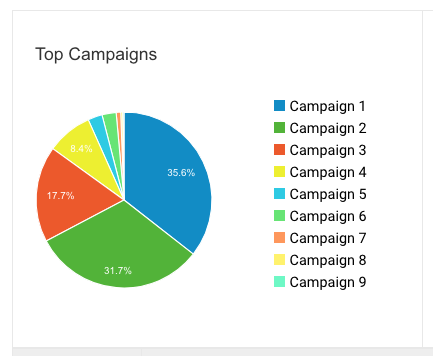Call tracking systems are a crucial part of a complete online and offline marketing campaign attribution system. Oftentimes, call tracking services and software serve as the adhesive that unites marketing efforts across all different planes.
The modern marketing environment spans all devices, all mediums, and all moments in a potential buyer’s journey. A potential client can leave for work and encounter marketing and advertising in multiple ways: He might hear a radio ad in the car and then pass a branded billboard. He may then read a newspaper advertorial on the train. When he gets to work, he could have a product email in his inbox, and then later he may see an ad on social media while perusing his timelines.
A comprehensive marketing plan includes all forms of advertising and extends across multiple touchpoints. Call tracking software offers the metrics link that’s often missing in tying all these ad campaigns and marketing ventures together.
How does call tracking work? Learn more here.
Attribution and data-driven marketing
Attribution is the key to an effective marketing strategy. Tools like Google Analytics, Search Console, and Google Ads (formerly AdWords) offer reporting that gives marketers an idea of how individual campaigns are performing within that silo. However, well-rounded attribution includes both online and offline channels. With a holistic attribution strategy, marketers and sales reps can learn what cross-channel campaigns and experiments are bringing in the most qualified leads.
Call tracking software is one of the easiest ways to merge data from online and offline campaigns. With an extensive call tracking system, businesses can determine which programs are driving customer calls, clicks, form fills, and other methods of conversion. No link is missed when all these elements are being accounted for.
Online campaign attribution
Marketers may wonder how call tracking can help their online attribution if they get data from sources like Google Analytics and Ads. These sources provide thorough information on how people got to your website, what users do on a site, what keywords drove ad clicks, the amount of traffic certain ads drove, and more.
However, the offline elements that happen as a result of an online search or site visit cannot be captured by these online analytics tools. How does a business know if a customer called from a search that resulted in a Google My Business page visit, a PPC ad click, or an organic search?
A survey of 1,500 people in the UK found that “94% of respondents have needed to call a business that they were searching for on their phones.” That’s a crucial element of a potential online conversion that’s potentially unaccounted for. Call tracking numbers provide the most accurate data for these potential buyers who start their customer journey online but continue or complete it offline.
Comprehensive call reports like those available with CallRail give marketers and sales development representatives the inside view into what drives potential buyers to pick up the phone. This information gives marketers the tools to continually improve their campaigns and ad buys, while sales reps already know what pain points a potential buyer is looking to solve based on search data and behavior.
Click here to learn how to find out which ads & keywords drive these phone leads.
Offline campaign attribution
Online marketing is often seen as the way marketing is nowadays. Offline marketing channels can be seen as old school or outdated, but the truth is that many offline channels are still effective as supplemental or main sources of marketing for many businesses and industries. Radio ads, direct mail, billboards, newspapers, industry publications, etc. often serve as drivers of business for small businesses and local companies.
Call tracking system features provide useful insights into the business these offline campaigns drive. By assigning a unique local or toll-free tracking number and a unique landing page URL to each offline campaign, marketers can see how their direct mail campaigns, radio ads, and billboards are performing.
Leads from offline campaigns are less likely to be captured accurately without the kind of attribution that call tracking provides. Business owners can ask, “How did you hear about us?” but the chances that a buyer remembers the exact source in which they encountered the brand are low.
Because a tracking number is assigned to each individual offline campaign, this means users can also A/B test different campaign variations. Determine which CTA or offer is more effective for direct mail by giving each variation its own tracking number and determining which drove more qualified leads.
Call tracking: A missing piece of the attribution puzzle
Marketers and sales professionals invest tons of time and money into curating and analyzing as much of their data as possible. However, without a method to track both online and offline efforts, the data may not be as comprehensive as we believe it to be. Call tracking can be the bridge that covers these missing data gaps.












